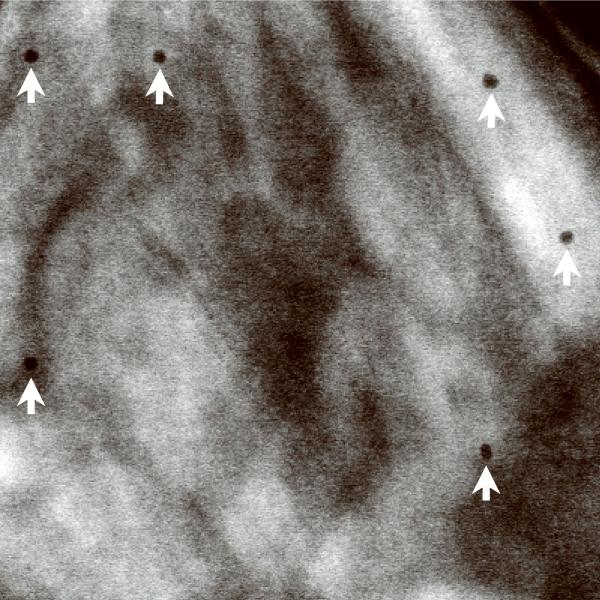Figure 3.
3D ultrastructure of human erythrocyte infected with malaria parasite P. falciparum. (a) 20-nm thick slice across BF STEM tomogram obtained from a 1 μm-thick section (see also Supplementary Figure 10). (b,c) Rendered 3D model of an infected erythrocyte. In c, the erythrocyte plasma membrane (EPM) and some organelles were removed to show the parasitophorous vacuole membrane (PVM) and parasite plasma membrane (PPM). (d–h) Slices across tomogram (left) with 3D models of the same regions (right). (d) Apicoplast, endoplasmic reticulum (see text for details), lipid body and PPM. (e) Several putative Golgi cisternae surrounded by an invaginating PPM. (f) Rhoptry with typical pear-shaped outline (arrowhead). (g) Parasite-derived membrane structures in the cytoplasm of erythrocyte (arrowheads). (h) Tubular extension of PVM (arrow) and putative Maurer's cleft (arrowhead). Abbreviations: nucleus (N), rhoptry (R), food vacuole (FV), endoplasmic reticulum (ER), apicoplast (AP), lipid body (LB), circular cleft (CC). Scale bars, 1 μm (a), 400 nm (d), 200 nm (e–h).

